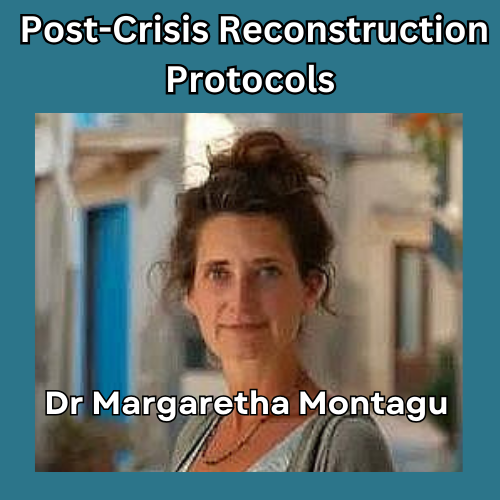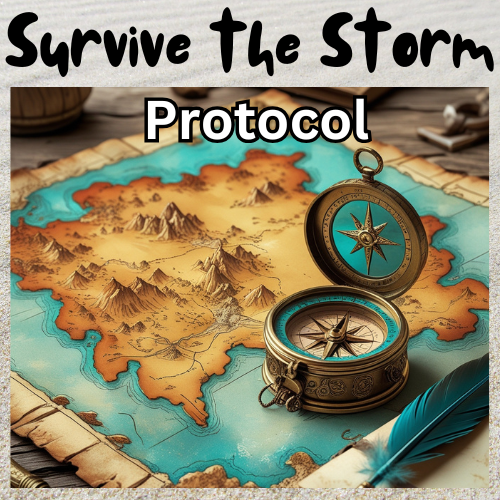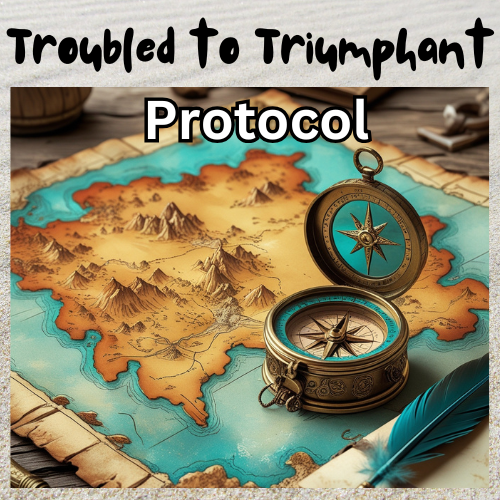Strategies for Introverts
Introduction
Time is ticking, the pressure is mounting, and a decision must be made. Whether you’re a leader steering your team through a critical juncture, a professional juggling multiple priorities, or simply navigating life’s daily challenges, the ability to make sound decisions under time pressure can feel like a superpower. Yet, in those high-stakes moments, clarity often gives way to doubt, and the fear of making the wrong choice looms large.
As an introvert, I have great difficulty with this. Making important descisions under pressure just doesn’t come naturally to introverts.
So what can we do?
Strategies for Introverts
Introverts CAN make decisions under pressure by using these strategies:
- Buy time: When faced with an immediate decision, ask for a brief moment to consider the options. This allows for a quick mental review without appearing indecisive.
- Prepare in advance: Anticipate potential scenarios that may require quick decisions and develop a personal “emergency response kit” for common situations.
- Seek trusted opinions: Quickly consult with colleagues or team members whose judgment you trust, even if they have differing viewpoints.
- Use intuition and analysis: Combine gut feelings with rapid analysis of available information to make more informed decisions.
- Practice crisis scenarios: Regularly rehearse decision-making in high-pressure situations to develop a more flexible decision-making style.
- Focus on strengths: Leverage introverts’ natural abilities for deep thinking and thorough analysis, even in compressed timeframes.
- Communicate clearly: When announcing a decision, articulate it clearly and empathetically, being open to questions and providing reassurance.
- Schedule recharge time: Plan for solitude after high-pressure situations to help recover and maintain energy levels.
- Use writing: If possible, communicate decisions through writing, allowing for clearer articulation of thoughts.
- Trust your judgment: Recognise that making a decision is often better than no decision at all, even if it’s not perfect.
By implementing these strategies, we can leverage our natural strengths while adapting to the demands of quick decision-making in our personal and professional lives.
Effective decision-making isn’t about eliminating pressure—it’s about mastering it. By leveraging proven strategies, you can cut through the chaos, focus on what truly matters, and move forward with confidence—even when time is scarce.
The Introvert’s Personal “Emergency Response Kit”
Below, I’ve listed 10 practical techniques to sharpen your decision-making skills, so you can function under pressure and make choices that drive meaningful results.
1. Use the Eisenhower Matrix:
This tool divides tasks into four quadrants based on urgency and importance:
- Urgent and Important: Tasks needing immediate attention (e.g., deadlines, crises).
- Important but Not Urgent: Strategic priorities you should plan for (e.g., long-term goals).
- Urgent but Not Important: Tasks that can often be delegated or minimized (e.g., interruptions).
- Neither Urgent nor Important: Low-value activities to eliminate or postpone.
When time is short, this matrix helps you avoid wasting energy on unimportant tasks and ensures your focus stays on high-impact actions.
2. Apply the Pareto Principle (80/20 Rule):
The idea is that 20% of efforts typically drive 80% of outcomes. When deciding under time pressure:
- Identify which few decisions or actions will have the greatest impact.
- Avoid getting bogged down by trivial matters that won’t significantly influence results.
For example, if you’re launching a project, focus on critical factors like stakeholder buy-in and core deliverables rather than minor details.
3. Implement Timeboxing:
Timeboxing involves setting a fixed period to complete a task or make a decision. For instance:
- Allocate 15 minutes to finalise a meeting agenda or 30 minutes to choose between vendors.
- When the time is up, move forward with the best option available. This approach minimizes overthinking and prevents “analysis paralysis,” where excessive deliberation delays action. It also creates a sense of urgency, promoting faster, more decisive behaviour.
4. Use the Two-Minute Rule:
Small decisions or tasks, such as replying to an email or approving a straightforward request, can quickly pile up. The Two-Minute Rule suggests handling these immediately.
This prevents clutter in your mental space and leaves more time for larger, more complex decisions. By clearing quick decisions off your plate, you maintain focus on high-priority tasks.
5. Leverage Decision Trees:
Decision trees are visual tools that outline possible choices, consequences, and outcomes. For example:
- If you’re choosing between two vendors, a decision tree might map out factors like cost, delivery time, and customer reviews.
- By considering these paths, you can clarify potential risks and rewards in minutes, enabling you to make well-informed decisions even in complex scenarios.
6. Trust Your Intuition:
Sometimes, after weighing the pros and cons, options may seem equally viable. In these cases, intuition—your subconscious synthesis of past experiences and knowledge—can guide you.
- Intuition often provides a swift, reliable decision when logical analysis stalls.
- However, balance intuition with rational thinking to ensure biases don’t dominate your judgment.
7. Use Simple Frameworks:
Simplified tools like a pro/con list or a basic decision matrix can help:
- For example, list the advantages and disadvantages of each option, then weigh them against your priorities.
- Frameworks like this streamline decision-making, particularly for mid-level choices that don’t require extensive deliberation.
8. Break Down Large Decisions:
Big, complex decisions can be overwhelming, especially under time constraints. Break them into smaller, manageable parts:
- Instead of deciding everything at once, tackle one aspect at a time, like defining key goals or identifying top risks.
- Progress on smaller decisions builds momentum and reduces the psychological weight of the overarching choice.
9. Consult Key Stakeholders:
Collaboration can uncover valuable perspectives you might miss alone. When time is tight:
- Quickly identify and engage people whose input is most relevant.
- Be concise and direct in soliciting feedback to ensure efficiency.
Stakeholder input can validate your choices, surface blind spots, and provide critical insights for more confident decision-making.
10. Be Aware of Biases:
Cognitive biases, like confirmation bias (favoring information that supports your preconceptions) or groupthink (prioritizing consensus over sound judgment), can distort decisions.
- Actively question assumptions and seek diverse viewpoints.
- Recognise when emotions or external pressures may unduly influence your thinking.
Awareness of biases enables you to approach decisions more objectively, even in high-pressure situations.
My Own “Secret” Strategy
In the heat of the moment in high-pressure situations, introverts can harness the power of journaling to make swift, effective decisions. A quick brain dump, can help you clear mental clutter and reduce stress, paving the way for clearer thinking. This can be combined with emotion processing, where getting stifling feelings out of you head and down on paper prevents emotional overwhelm from clouding your judgment. Creating a rapid pros and cons list can help to outline potential consequences and benefits and provides a structured approach to the decision at hand. Taking a moment to identify core values ensures that the decision aligns with what’s truly important to you.
As the pressure mounts, you can use journaling to perform an external influence check, briefly noting any societal pressures or expectations that might be influencing the decision. A worst-case scenario analysis, where writing down the most negative possible outcome can help rationalise fears and gain perspective. Reflecting on past experiences through quick notes can provide you with valuable guidance, drawing on lessons learned from similar situations.
Maybe you prefer to use mind mapping techniques, creating a visual representation of thoughts and connections to see the bigger picture. Writing down your expectations – what you anticipate will happen and why – can prevent hindsight bias later on. Finally, a physical and emotional check-in, noting how you feel both physically and emotionally about the decision, grounds the process in personal experience. By using these techniques, you can leverage yourr natural inclination for introspection to make more confident decisions under pressure, even when time is of the essence.
I always start by buying time, and then I usually chose the two or three most obviously effective options from the suggestions above.
Regular journaling can be a powerful tool for introverts to make decisions under pressure by providing these long-term benefits:
- Stress reduction: Regular journaling helps introverts manage stress, which is crucial for clear thinking in high-pressure situations.
- Enhanced self-awareness: Through journaling, introverts can deepen their self-awareness, helping them understand their preferences, values, and decision-making patterns.
- Clarity of thought: Writing down thoughts and concerns can help unravel overwhelming ideas, leading to clearer perspectives on challenges.
- Improved problem-solving skills: Articulating problems through writing enhances problem-solving abilities, which is valuable for decision-making.
- Emotional processing: Journaling allows introverts to explore and process complex emotions, preventing emotional overwhelm during decision-making.
- Safe space for exploration: Journals provide a judgment-free zone where introverts can freely explore various decision options without external pressure.
- Decision tracking: By documenting decisions and their outcomes, introverts can learn from past experiences and improve future decision-making.
- Creativity boost: Journaling nurtures creativity, which can lead to innovative solutions and decision approaches.
- Worst-case scenario analysis: Using techniques like worst-case scenario journaling can help introverts confront and rationalize their anxieties about potential outcomes.
- Quiet reflection: Journaling offers a quiet, solitary activity that aligns with introverts’ need for introspection, allowing for deeper contemplation of important decisions.
Journaling regularly allows introverts to develop a more structured and introspective approach to decision-making, especially in high-pressure situations. On my Camino de Santiago walking retreats, this practice becomes a transformative tool for self-discovery. As you journey through the breathtaking landscapes of southwest France, daily journaling sessions provide a quiet sanctuary to process your thoughts, gain clarity, and connect with your inner self. Guided prompts encourage reflection on your path—both literal and metaphorical—helping you identify what truly matters. If you’re navigating a personal crossroads, journaling amplifies this 5- or 7-dat Camino de Santiago retreat’s essence: stepping away from the noise to walk with purpose, reflect with intention, and emerge with renewed confidence.
A Life-Changing Decision
Chloe’s fingers drummed silently against her leg as she sat in the conference room, surrounded by eager faces waiting for her answer. The opportunity to lead the company’s new Singapore office had dropped into her lap just forty-eight hours ago, when Sarah had unexpectedly declined the position. Now, fifteen pairs of eyes bored into hers, expecting an immediate decision.
The fluorescent lights hummed overhead, a sound that usually faded into background noise but now seemed to drill into her consciousness. She needed time—time to research, to make lists, to carefully weigh every pro and con. That’s how she’d always made important decisions. But CEO Marcus Chen was leaving for Singapore in three hours, and he needed an answer now.
Her apartment, her carefully curated sanctuary with its reading nook and herb garden on the balcony, flashed through her mind. The thought of leaving it behind made her chest tighten. Then there was her sister Emma’s baby, due in four months. How could she miss becoming an aunt?
But beneath the anxiety, another feeling stirred. In her mind’s eye, she saw herself standing on a balcony overlooking the Singapore skyline at dawn, the air heavy with possibility. She thought of all the times she’d stayed in her comfort zone, choosing safety over growth. Each of those small decisions had felt right at the moment, but they’d piled up into a mountain of regrets.
Chloe took a deep breath, her heart pounding against her ribs. The silence in the room had stretched to nearly two minutes. In her normal world, two minutes was nothing—a breath, a blink. But here, now, it felt like an eternity.
“Yes,” she said, her quiet voice somehow filling the entire room. “I’ll do it.”
The word hung in the air for a moment before the room erupted in congratulations. But Chloe barely heard them. She was already thinking about how to tell Emma—not about leaving, but about how she’d finally found the courage to take the leap.
Final Thoughts
Making decisions under pressure is a challenge for anyone, but as an introvert, your natural tendencies toward thoughtfulness and introspection can be your greatest assets. By taking small moments to pause, reflect on your values, and weigh your options—even in high-pressure situations—you can make choices that feel authentic and meaningful.
When time is limited, perfection is often unattainable, and that’s okay. Focus on what matters most, trust your intuition, and accept that some level of uncertainty is inevitable.
It’s okay to embrace quiet strategies, like journaling your thoughts, mentally rehearsing scenarios, or seeking advice through one-on-one conversations rather than group discussions. These methods honour your introverted nature while empowering you to act with confidence and clarity.
Ultimately, every crossroads offers an opportunity to learn more about yourself and your priorities. Trust that even under pressure, you have the tools to navigate decisions with grace and intentionality. When you align your choices with who you truly are, the path forward will become clearer—one thoughtful step at a time.

“I am an experienced medical doctor – MBChB, MRCGP, NLP master pract cert, Transformational Life Coach (dip.) Life Story Coach (cert.) Counselling (cert.) Med Hypnotherapy (dip.) and EAGALA (cert.) I may have an impressive number of letters after my name, and more than three decades of professional experience, but what qualifies me to excel at what I do is my intuitive understanding of my clients’ difficulties and my extensive personal experience of managing major life changes using strategies I developed over many years” Dr M Montagu
In a world that feels increasingly unstable — politically, economically, emotionally — what will you do when the rug is pulled out from under you? That’s why I created Survive the Storm — a 7-part online course designed to be a lifeline during a life quake. This is your personal survival toolkit for uncertain times — lovingly crafted and packed with practical tools, emotional support, and soul-nourishing insights to help you stay grounded, resilient, and resourceful when everything around you feels like it’s falling apart. Enrol in How to Survive the Storm Protocol, with or without additional mentoring.













































